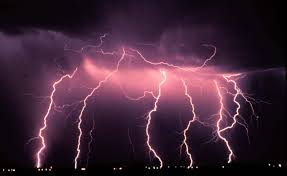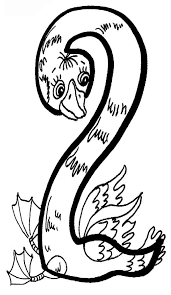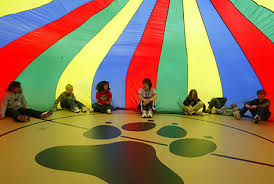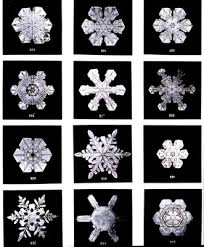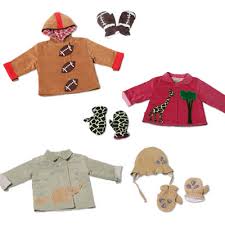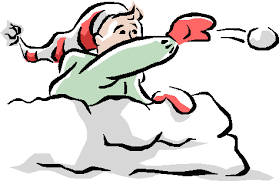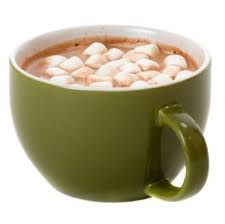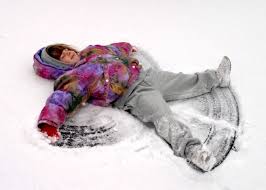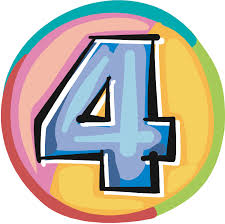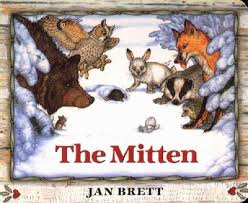I teach.
It is the one thing I was sure I did not want to do when I attended college.
But now, I teach. Fitness, to adults and teens. Creative dance to children--preschoolers are my specialty. Yes, I have a specialty. It is not brain surgery or leveraged buyouts, but it is mine. Several years ago, feeling my age, I reflected that I may be too old to teach exercise and preschoolers much longer. But with 9/11, the Iraq war, another Bush presidency bringing me down, I could not give up this work that is upbeat and energetic. I move for a living and I need to move. It may not be touring with Pilobolus, but everyday I get paid to stretch my body and play. I play with my preschool students. Little girls come to my Saturday morning dance class with tutus and tiaras and tons of energy. They are so happy to see me and dance with me. Who could give that up? We move like elephants, float like leaves, leap and make shapes with our bodies. One day in a co-ed preschool dance class, I asked the kids why we dance. (My lesson plan had to do with telling stories through dance and this question was meant to introduce that concept.) “’Cause it’s fun?” replied Claire. “Because we move our muscles!” announced Danny. “I like to dance, and do ballerina moves,” agreed Erin. And they were all off, dancing, spinning, jumping. Just talking about it wasn’t enough. They were, truly, irrepressible! We did eventually get to our story dance. But what a gift they gave me that day. What a lift they provided for me. Sometimes I lament my lack of a linear career path, my shortage of clear goals and objectives, the unwillingness to push myself, and the fact that I will never own a beach house. But then I think maybe I am in the right place for me whether I reached it in a circuitous path or even by mistake.
And what are the hot issues today in early childhood education?
Obesity and the importance of play. Here I am, ready to stretch and play !

Moving Studios teaches creative dance on-site at preschools, aftercare programs and community centers. After teaching for over 20 years I have found a rhythm to my lesson plans that ties in dance concepts with seasons, holidays, and books. I use tried and true methods. I use music and props. I follow the lead of the children and frequently learn something new.
Yesterday I learned that 4 year-old Annie's mom is "about to be old" and so her hair has white in it.
Dance Like No One is Watching!
But, back to dancing......I would like to share my experience with people. Parents, teachers, families, schools that may want to insert more movement into their days whether it is to fight obesity, refocus the brain, stretch the muscles or just feel good!
We all dance, we all move, we all respond to music and rhythms, we all have bodies which crave movement.
My first suggestion is put on music you love and dance around the living room with your children.
It is the one thing I was sure I did not want to do when I attended college.
Moving Studios teaches creative dance on-site at preschools, aftercare programs and community centers. After teaching for over 20 years I have found a rhythm to my lesson plans that ties in dance concepts with seasons, holidays, and books. I use tried and true methods. I use music and props. I follow the lead of the children and frequently learn something new.
Yesterday I learned that 4 year-old Annie's mom is "about to be old" and so her hair has white in it.
Dance Like No One is Watching!
But, back to dancing......I would like to share my experience with people. Parents, teachers, families, schools that may want to insert more movement into their days whether it is to fight obesity, refocus the brain, stretch the muscles or just feel good!
We all dance, we all move, we all respond to music and rhythms, we all have bodies which crave movement.
My first suggestion is put on music you love and dance around the living room with your children.
Below, I have listed some of my spring lesson ideas for creative dance class. But it is still a bit cold outside and I have not really started them. And presently, many of my classes are totally hooked on Ship Shape Shop. Today, I decided to run with it and had a great class with some inspiration from Anne Green Gilbert as well. http://www.creativedance.org/resources/resources.cfm
My afterschool class is a mix of boys and girls and ages from about 5 to 8. They have a million ideas and lots of desire to express them.........in words. I am constantly saying "Show me, don't tell me!Today I added the concept of level throughout the warm-up, worked on our flash cards discussing level a bit, and ended with Ship Shape Shop -- where level and flash card ideas were brought to the activity by the kids on their own. That's the way it is supposed to work and it really felt great.
Here's what happened:
In the last few weeks I have used walk, walk, walk and stop, freeze dance, shape museum, and other shape lesson plans to get them going. Last week I introduced flash cards. At a point in the class where they could use a rest or need to quiet down I gather them in a circle and refer back to walk walk walk and stop saying, "All these words are names of movements that take us from here.....to there. Locomotor moves. Action words. Verbs. Can you think of any other ways to get from here.......to there not mentioned in the song?"
Many classes especially if they are preschoolers, will start mentioning the words in the song: walk, jump, march, gallop, skate, tiptoe. When I press for a new word they always come up with run before they really get creative.
My afterschool class skipped all the classic locomotor words.
They could tell us or show us the movement. Some of them were so complicated we could not guess what they were: scuba diving, pop-up (hard to describe) . They came up with verbs very few of my other classes ever came up with like prowl and prance. And they loved using markers to write on the cards I brought--one word per card. Those become our flash cards we use class after class. It's more meaningful than prefabricated cards.
Today's class, energetic and curious, anticipated the use of adverbs. When I asked if there were any new ideas for the action flash cards I got some very complicated descriptions of actions, and how to perform them so we started some adverb cards like high/low, fast/slow and ugly/beautiful.
But we needed to move on to Ship Shape Shop!
This is an activity I learned from Lisa Welsh, of First Position Dance Arts. It is described in a book.............?? Lisa and I have verious versions involving trips to the ocean, wrapping the shapes in crepe paper and many others.
Today's group had done ship shape shop 3 or 4 times during previous classes.
I always start the same way:
"I am the owner of a shop. The Ship Shape Shop. I sell shapes. People come from all over the world to buy my shapes because I have the best shapes. I have round shapes, and tall shapes, and wide shapes and small shapes." (I encourage the children to demonstrate these types of shapes). "I have singer shapes, ballet shapes, super hero shapes, animal shapes...." (you get the idea).
"Every day I clean and dust my shapes." (I use a scarf or kleenex and walk around dusting the kids--they love this. "Do me!" "You didn't do me!" ) I talk as I clean, "Oh, I forgot I had this little cat shape...these two low shapes would look good by a fireplace.....but I have a problem....this shop is too crowded....I need to have a sale."
I turn my back on the class and mime writing a "For Sale" sign and hanging it in the window. I turn back. (Generally, at this point, some people have changed their shapes.) "Oh, I do not remember this flat shape!" I keep cleaning and then turning my back again on them and mime calling my friends to invite them to the sale. (Gradually, all the kids catch on that they can trick me while my back is turned.) "Wait, what happened to that flat shape that was over there?"
I repeat this turning back and forth as long as it takes for them to get the idea and for as long as they are having fun (which is ... long, they laugh and laugh).
After I while, I decide the shapes are magic and that when I turn my back they can move and when I look at them they are frozen. Saying this aloud enables anyone who did not catch on before, to understand what is happening and then I repeat turning away again a few more times.
Next, the shop keeper goes to bed and anticipates the sale. This is where the story changes according to the group of kids. I sit with them and say the shapes are scared because they do not know what a sale is: Show me a scared shape. But one shape explains the concept of sale. Then they are sad because they realize they may never see their shape friends again if they are sold. Show me a sad shape. What should they do?
Sometimes I facilitate the ending I want.....they run away. ..they melt into the ground...thus avoiding being sold. Or they have one last party (a freeze dance is involved) before the sale. Or they hide (inevitably the kids' favorite). Or we have the sale and as each shape is sold I wrap them in crepe paper and give them to the customer (this works well for parent demonstrations).
But, today....here's what happened.
The shapes brainstormed. "We could be flat and no one would buy us," suggested Nora. "Or," said Destiny, "We could be really ugly and no one buy us!" "We could dress up and go away!" "I know, we could do a shape and then someone else could do one near us, touching us, and then another one....."
They developed the idea that they could form one big shape and be sold as a unit.
By then we were out of time so I gave them one minute to dress up in scarves and one song to dance to.
What I loved was that "FLAT" and "UGLY" were two of the descriptor words they had developed earlier in the class and were now putting to use in their story dance.
"If we cannot bring ourselves to dance, we become sick. Dancing heals."
Transitioning into spring in dance classes I use the same class structure. I still use lots of animals, more books, and spring images about the sun, rabbits, eggs, Will It Rain? by Holly Keller is a favorite of mine. It includes lots of animals: squirrel, rabbit , frog, bird and more. It describes a rainstorm. Lots of movement ideas: the trees bend in the wind. This gives me a chance to use some of my favorite activities and can really help kids understand and possibly conquer their fear of thunderstorms. Sometimes if I come to class on a rainy day I just add in Maryanne Torbert's rainstorm (as described below) but you can insert it while reading Will It Rain? too. 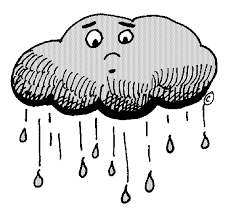 "Here comes the wind!" rub your palms together (with a large class this "wind" can be quite loud!)
"Here comes the wind!" rub your palms together (with a large class this "wind" can be quite loud!)
"The rain is starting slowly...." tap your fingertips together lightly
"It's getting louder and faster!" clap your hands together loudly and quickly--this can be invigorating, and loud.
"Here comes the thunder" stamp your feet "Oh, the rain is going away" clap slower and softer
"And the wind is dying down" rub hands slower come This can all be done at a desk or seated in a circle. But Moving Studios then adds:
"And out comes the sun!" mime a rising sun and free dance to "Walkin' in Sunshine" You can talk about rainbows and draw the shape of a rainbow with your hands, or with your leg or with your whole body and then do a freeze dance to any of the rainbow songs you know. I like "The Rainbow Connection" or Israel Kamakawiwo'ole's version of Somewhere Over the Rainbow. My colleague Donna Starkman added to the storm repertoire: pitter patter tap tips of fingers together pitter patter pitter patter
SPLASH! clap hands together loudly
zig zag make sharp, angled zig zag shapeszig zag with hands and arms zig zag
FLASH! open both arms wide as in a surprised motion boom boom stamp on the floor alternately feet boom boom boom boom CRASH! stomp both feet down hard Both these storm activities may be done sitting or standing. They give the children a chance to make some noise which can be helpful in getting out the excess energy of some kids! In the Will It Rain? book there is also a reference to the quiet before the storm and the children can try to be still...it's a challenge. Some general springtime activities follow:
During walk and walk and walk and stop...add weather walks (also from Maryanne Torbert): insert the idea of walking in the wind, walking in the rain, galloping with and umbrella, jumping through tall grass, looking at butterflies while walking.....add to the ideas. Some of the children may come up with ideas also.
During animal action--insert questions about which animals you think about in spring. Different cultures may have different animals that get mentioned. Freeze dance with hoops: I sometimes revert back to fall plan of hoops as dens, shells, caves, places for hibernating animals. Everyone gets in a hoop and sleeps when the music is off. When the music goes on--it is spring and all the animals wake up and dance around the room. Repeat as necessary!
This year I have been talking about all the snow and I have white plastic bags that I recylce bundled up and use them as piles of snow for the kids to jump over.
So this week I had one big bag of while plastic bags that I put down and said. There is only a little bit of snow left ! Shall we jump over it?
Then I ask --what happened to all the snow....right! it melted...and What was left on the ground? They sometimes take a while but eventually say WATER !
Then I use hoops or place mats as puddles and play the "Jumping in a Puddle" by ___________?
Depending on the group and the space, as they are jumping I slowly pick up one puddle then another until there are none. What happened? The puddles dried up , evaporated, the water went down into the ground or up into the sky and out came a rainbow (make a rainbow shape with arms, or legs, or whole body) and do a sunshine dance (Walking in Sunshine, Or Why are there so many songs about rainbows, or Somewhere over....you get the idea)
Also, I do mountain pose (strong straight stand) and portdebras for sun rising and setting and you could make a dance out of that, too.
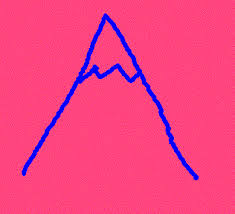
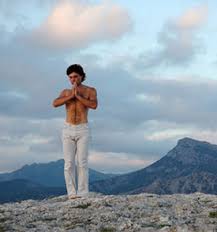
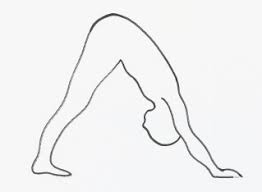
Gardening Images are great also,
In the heart of a seed....
Then you can introduce the idea of magic garden. We are going on a trip to the magic garden where you can be anything you want. The magic garden has all the things you like in it. If you like snow, it is full of snow, if you like flowers, it is full of flowers, if you like unicorns,etc. Use your imagination. It's a long trip, through tall grass, over a river, up a mountain, along a ledge. (add in whatever you like) Use a hoop as the gate to the magic garden. The children go through the gate and fall asleep. Because it has been a long trip and because their imaginations have to start working. They will awaken when they hear music. In silence, as they "sleep" I place one scarf on each child. The music comes on and they explore the magic garden (I like to use Mozart).
Transitioning into spring in dance classes I use the same class structure. I still use lots of animals, more books, and spring images about the sun, rabbits, eggs,

SPLASH! clap hands together loudly
zig zag make sharp, angled zig zag shapes
During walk and walk and walk and stop...add weather walks (also from Maryanne Torbert): insert the idea of walking in the wind, walking in the rain, galloping with and umbrella, jumping through tall grass, looking at butterflies while walking.....add to the ideas. Some of the children may come up with ideas also.
During animal action--insert questions about which animals you think about in spring. Different cultures may have different animals that get mentioned.
This year I have been talking about all the snow and I have white plastic bags that I recylce bundled up and use them as piles of snow for the kids to jump over.
So this week I had one big bag of while plastic bags that I put down and said. There is only a little bit of snow left ! Shall we jump over it?
Then I ask --what happened to all the snow....right! it melted...and What was left on the ground? They sometimes take a while but eventually say WATER !
Then I use hoops or place mats as puddles and play the "Jumping in a Puddle" by ___________?
Depending on the group and the space, as they are jumping I slowly pick up one puddle then another until there are none. What happened? The puddles dried up , evaporated, the water went down into the ground or up into the sky and out came a rainbow (make a rainbow shape with arms, or legs, or whole body) and do a sunshine dance (Walking in Sunshine, Or Why are there so many songs about rainbows, or Somewhere over....you get the idea)
Also, I do mountain pose (strong straight stand) and portdebras for sun rising and setting and you could make a dance out of that, too.



Gardening Images are great also,
In the heart of a seed....
Then you can introduce the idea of magic garden. We are going on a trip to the magic garden where you can be anything you want. The magic garden has all the things you like in it. If you like snow, it is full of snow, if you like flowers, it is full of flowers, if you like unicorns,etc. Use your imagination. It's a long trip, through tall grass, over a river, up a mountain, along a ledge. (add in whatever you like) Use a hoop as the gate to the magic garden. The children go through the gate and fall asleep. Because it has been a long trip and because their imaginations have to start working. They will awaken when they hear music. In silence, as they "sleep" I place one scarf on each child. The music comes on and they explore the magic garden (I like to use Mozart).
Winter Dances
W I N T E R

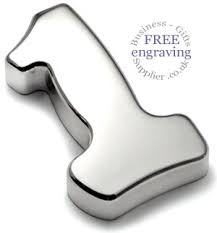
Follow the standard class plan on previous blogs. When you get to Animal Action, insert winter animals.
During Animal Action ask the kids when they are doing elephant:
Do elephants like snow? (Wait for response...) No?
They live where it is hot--Africa, India.
Do cats like snow? NO!
But there is a snow leopard which is white and lives in snow.
When the first verse of Animal Action is over ask kids which animals like snow or cold and then move like those animals:
polar bear, arctic wolf, penguin, seals, snow leopard, snowshoe rabbit
I am always amazed how much young children know about animals. And what they come up with when you ask for snow animals--and then I am amazed at my ignorance of general science. One child mentioned a musk ox! I don't know where they live or if they like snow!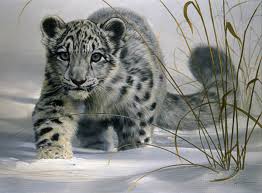
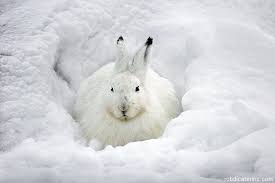

polar bear, arctic wolf, penguin, seals, snow leopard, snowshoe rabbit
I am always amazed how much young children know about animals. And what they come up with when you ask for snow animals--and then I am amazed at my ignorance of general science. One child mentioned a musk ox! I don't know where they live or if they like snow!



So, according to Wikipedia, musk ox live in Arctic Canada, Greenland, and Alaska.
I guess they do
like the snow !
Go on with the second verse of Animal Action and continue brainstorming about winter animals or segway to a new activity.
I use this book in the fall sometimes--it has vibrant fall colors and is about leaves turning color and temperatures dropping.
Again, you could start with the standard lesson plan and segway into this book at Animal Action, or spend a whole class on the book.
Go through it slowly emphasizing movement words:
bear crawls into his cave,
snail slithers,
skunk curls up in his den.
Use small spandex tubes, for kids to crawl into, or blankets to cover each child/animal as they fall asleep for the winter.
Or use hoops as dens, caves etc. and do a freeze dance. Let them get in hoops as sleeping animals then turn music on and say: "It's Springtime". They dance. Turn off music. They sleep: "It's winter time, let's sleep." You can introduce the word hibernate for sure -- you may even get to migrate and adapt:
Hibernate:
Many children know that
bears fall asleep in their dens during winter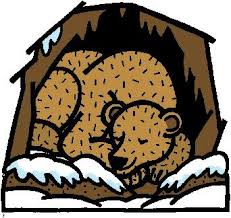
Time to Sleep tells the story of other animals which hibernate: skunk, ladybug, turtle, woodchuck.
Migrate: geese fly south when it gets cold here
Children love to "fly." Flying in formation could be interesting to older kids, taking turns as leaders. (Modern dancers use an improvisation like this called "flocking" !)
The youngest have fun honking while they fly.
Normally, I discourage making animal sounds --
it distracts the kids from dancing and, when we are playing animal charades
it makes it way too easy to guess the animal!
Use small spandex tubes, for kids to crawl into, or blankets to cover each child/animal as they fall asleep for the winter.
Or use hoops as dens, caves etc. and do a freeze dance. Let them get in hoops as sleeping animals then turn music on and say: "It's Springtime". They dance. Turn off music. They sleep: "It's winter time, let's sleep." You can introduce the word hibernate for sure -- you may even get to migrate and adapt:
Hibernate:
Many children know that
bears fall asleep in their dens during winter

Time to Sleep tells the story of other animals which hibernate: skunk, ladybug, turtle, woodchuck.
Migrate: geese fly south when it gets cold here

Children love to "fly." Flying in formation could be interesting to older kids, taking turns as leaders. (Modern dancers use an improvisation like this called "flocking" !)
The youngest have fun honking while they fly.
Normally, I discourage making animal sounds --
it distracts the kids from dancing and, when we are playing animal charades
it makes it way too easy to guess the animal!
During Animal Action I often say:
"The song said MOVE like an animal, not TALK like an animal. "
Also, the music has animal sounds on it. In general,
I want the children to be quiet when there is music on.
I encourage them to listen and respond to the music.
"The song said MOVE like an animal, not TALK like an animal. "
Also, the music has animal sounds on it. In general,
I want the children to be quiet when there is music on.
I encourage them to listen and respond to the music.
The first verse of Animal Action ends with duck. If we have been talking about hibernating animals, I might ask: "Does a duck like winter? Do ducks hibernate?"
I describe how some birds do not like the cold and fly away to warmer parts when winter comes. I gather the children in one corner of the room, calling it the North. Together we fly to the diagonally opposite corner of the room which I call South. We return North when it is warmer. And, we honk. It's great fun.
We must repeat it a few times!
I love this feeling of being an animal in a group--and teaching a bit about animal migration to the very young. (There is a modern dancer who leads workshops on migration and travels through national parks combining dance and animal migration techniques...I cannot find the link or would include it here.)
This work can also prepare young children for the Across the Floor section of a class for older, more experienced dancers!
We must repeat it a few times!

I love this feeling of being an animal in a group--and teaching a bit about animal migration to the very young. (There is a modern dancer who leads workshops on migration and travels through national parks combining dance and animal migration techniques...I cannot find the link or would include it here.)
This work can also prepare young children for the Across the Floor section of a class for older, more experienced dancers!
Adapt: squirrels store up food in the fall to survive the winter. In the fall I often use a freeze dance format for "gathering nuts by chipmunks or squirrels". It is an example of an animal adapting.
We place hula hoops around the room.
Warning on use of hoops with the very young....
I really do not expect most 2 years old to resist picking up a hoop on the floor.
It is only natural. It's not that easy for preschoolers to resist.
Who am I kidding? Ten years olds will pick up a hoop!
But with my preschoolers I slowly place one hoop on the floor and say:
"This is not a hoop. This is a tree. Trees are rooted to the ground
so this tree will stay here. The hoops stay on the floor.
Repeat it with me....the hoops stay on the floor." I also assure them
they will have a chance to pick up the hoops later.I place the hoops around the room and ask each child to be a squirrel and go sit in a tree.
While the music plays children scramble about the room seeking "food." When the music stops the "squirrels" hurry back to their "nests" to store their food.
I repeat the activity 2 or 3 times and then, when the music is off ask the kids, "Do you have enough food stored for winter?"
Depending on their response I continue the activity or move on....
Usually to a freeze dance where the children may pick up the hoops and dance.
No throwing hoops or touching others with the hoops!
If I can, I grab a hoop and dance with them modelling ideas because some groups are really stuck on just hula hooping. They get into more creative modes as soon as they see a couple of ideas from me
(balance hoop on my head, hold it waist high and dance in it, and on and on.) Or I may have a very creative child with a wonderful idea and I mimic him! They love that!
Another adaptive behavior: Horses wear blankets or coats!
No throwing hoops or touching others with the hoops!
If I can, I grab a hoop and dance with them modelling ideas because some groups are really stuck on just hula hooping. They get into more creative modes as soon as they see a couple of ideas from me
(balance hoop on my head, hold it waist high and dance in it, and on and on.) Or I may have a very creative child with a wonderful idea and I mimic him! They love that!
Another adaptive behavior: Horses wear blankets or coats!

Young children respond to pictures and I often laminate single pictures and use them in various classes.
I have one of horses wearing blankets, standing in the snow.
Animal Action has a horse in it. So you can bring up the topic of Adaptation then. "Do horses like the snow?" Usually the kids shout NO, Then I pull out my picture and they laugh at the horses wearing coats. I say, "I don't know if they like it, but they do not hibernate, and they do not fly away. They adapt. They put on a coat and go outside, just like we do!"
At the end of Time to Sleep, snow starts to fall. If you have stayed with the book, this is a nice way to end.
Snow can also be a stand alone activity without the book.
You can get out white scarves (mine are cut up curtains ) . Throw them in the air around the children.
"It's snowing!"
You can get out white scarves (mine are cut up curtains ) . Throw them in the air around the children.
"It's snowing!"

Kids may dance freestyle with scarves to music for several minutes. (Vince Guaraldi music from the Charlie Brown Christmas special is great for this activity. It is an instrumental so you do not have to worry about religious content. Most American kids will recogize it. Start with the slow and meditative "Christmas Time is Here," then the snow storm gets faster and the wind blows harder and you play "Linus and Lucy" or "Skating".)
You can expand Snow Dance in a variety of ways inspired by books or the kids themselves. Dance activities like skiing, snow ball fights, snow angels.
Snow angels are a nice way to end. 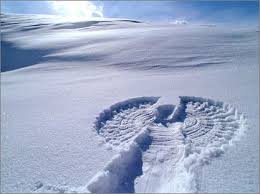
OR
If you have an assistant, use a large piece of flowing white fabric as a snowstorm:
Each adult holds one end of the fabric. Move it up and down and right and left to create a snowstorm. The children love moving through it. Encourage them not to hold the fabric--it needs to flow to feel like a whirling, twirling, snowstorm!
I have a piece of white fabric that is like parachute material. With more adults or older kids you can do snow versions of parachute games:
- with the fabric on the floor and helpers sitting around the edge holding on, let 2 or 3 little ones sit in
the center and then the people on the edge shake and move the parachute and the kids are sitting in the
middle of a snow storm !
- or with everyone standing, holding the edges, lift the fabric up and down a few times, then come all
the way down to a sit with the parachute under you -- you are sitting on the edges with it over you
like an igloo!
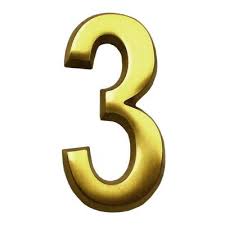
We had the snowiest winter of my life this year (Pennsylvania, USA, 2010). So I did snow dances week after week.
I asked my elementary school children what they knew about snowflakes. Wonderful brainstorming ensued as they told me snowflakes are cold and wet and fall from the sky. One girl started to explain the chemical composition of them! And one child exclaimed they are symmetrical. WOW !
One of the laminated pictures I tote about in winter is of snowflakes a scientist created in his lab. Each snowflake has 6 points but each design is different. I love to point out that each of us has 2 arms, 2 legs, one head but each of us is different, with a unique dance style.
You can use any of these concepts to create a dance class plan about up and down, pointed shapes, symmetrical shapes, geometric shapes.
Here is a snow dance warm-up I adapted from a colleague's idea. It worked well with the kindergartners I teach.
First, I asked them to make a snow flake shape with their bodies, standing. Next, I described, and we all tried together, some snow activities: shoveling a windy path through the snow, making footprints in deep, deep, snow, skating, climbing a mountain of snow and skiing down the mountain. 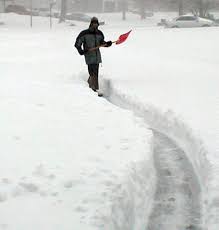

Next, I put on music and shouted out the various movements at random. The kids responded by doing each move as I mentioned it. When the music stopped we each did our snowflake shape.
Repeat as desired!
A Snowy Day by Jack Ezra Keats is another fun book you can insert into a regular class. Or build a class around it:
Start seated in a circle and get ready to go out in the cold:
What should we wear? Get ideas from kids -- mime getting dressed : warm pants, a wool sweater
"OH, my sweater from last year is too small, I'll need to stretch it (good warm up move); boots---so they have zipper?, velcro? buckles? A jacket, with a hood, or a hat, a scarf---mittens, or gloves .
"Let's go out in the snow!"
You could do walk,walk,walk and stop pretending you are in snow or on ice.
Make Footprints-- this is illustrated in the book with the boy leaving footprints the turn in, then foot prints that turn out (perfect for ballet lesson!)
You can talk about your own footprints, the kids like to look at the bottom of their shoes and see the patterns....they are varied! Or talk about animal prints you see in the snow in your yard: birds, rabbits, raccoons, deer. (This can lead into Animal Action as above.)
These activities can go on and on, or not, depending on kids. Catch the snow (scarf) on different parts of the body: hand, head, foot. Throw snowballs. Jump in snow.
One of my classroom is carpeted. So at one point I have the kids pile up the scarves and they take turns running and leaping over the snow. This was so much fun for them I decided my classes without carpets needed to do it. But how? It would be way too slippery with scarves on a linoleum floor. One day I had my plastic bags in the back of the car to recycle....you know, white plastic bags and pushed into one bag and tied at the top. They were great big snow balls. Now, every winter I use recycled plastic bags as heaps of snow for the kids to jump and leap over.
One of my classroom is carpeted. So at one point I have the kids pile up the scarves and they take turns running and leaping over the snow. This was so much fun for them I decided my classes without carpets needed to do it. But how? It would be way too slippery with scarves on a linoleum floor. One day I had my plastic bags in the back of the car to recycle....you know, white plastic bags and pushed into one bag and tied at the top. They were great big snow balls. Now, every winter I use recycled plastic bags as heaps of snow for the kids to jump and leap over.
When it is time to slow th dancers down I return to the story:
In A Snowy Day, the little boy tries to put a snowball in his pocket and then is sad when he cannot find it. The preschoolers almost always explain to me that it melted. And sometimes we do a melting dance:
Freeze in a shape. Like a long skinny icicle with a point! Melt into the ground.
Or you can settle the kids down by circling up and acting out another tried and true winter ritual:Hot chocolate and toast: soles of the feet together. Inside the circle is hot chocolate mix, how many scoops do we need? 10? OK , reach in with your right hand, 1,2,3,4,5 ...now your left 1,2,3,4,5 (pretend to scoop up chocolate and put it in your machine -- the space your legs create . Then pour in milk and turn on machine (press nose? or knee?) Make humming noise, or loud chunka chunka machine noises. Move your body a little, or a lot! When machine is done---Ding! pour out hot chocolate into a cup. MMMM! Let's make toast! Stretch legs out straight, flex feet and pretend they are pieces of bread, or bagels, or whatever. Point to toast them. Take a walk to the window (hip walk) to check on weather while toast is cooking. Then: What's that I smell? My toast is burning ! Hip walk back to circle, flex feet, toast is done. Spread it with jam, cream cheese etc. and have toast and hot chocolate.
Before I end this entry, though, I have to share one more book for winter dance class!
It's a classic about a lost mitten and animals crawling inside. So it's easy to start from an Animal Action verse and talking about animals that like winter and get to the story.
Or start with the getting dressed for winter and going outside, like the boy in the story.
This snowy winter I would just open to the first picture and ask: "Does anyone have a yard that looks like this?"
The Mitten is a Ukrainan folktale and the picture shows deep snow, branches weighed down by it, white everywhere!
You can read through pretty quickly and get to the animals. But over the years I have come to appreciate little details that I did not used to incorporate into my preschool classes.
Nicky wanted mittens white as the snow. Baba said she would not make him white mittens because he may lose them.
I ask the children who Baba is (clearly a grandmom) and we talk about names they have
for their grandmoms. Always a fun topic. I ask why she won't make him mittens and always someone comes up
with the fact that snow is white so a white mitten is easy to lose in snow.
Nicky goes out to play in the snow and drops a mitten.
We look at the pictures of Nicky outside. The children try to mimic the jumping shape he is making--bent
legs, raised arm.
One by one, animals discover the mitten and get inside.
There are footprints, including a mole tunnel; and animal moves, like an owl which swoops down, and more.
The rest of the story is about the animals in the mitten and how they get out. It is fun and easy to act out. I used
to use a large spandex tube as a mitten and actually have the children get inside. There is a page of the book
where the animals bump and jostle--interesting verbs. It can get a little crazy.
An easier method is to use a large piece of white fabric prefolded to as small a square as you can get. As each
animal comes along you unfold until the whole cloth is open and over the children and then you can lift it off easily at
the end of the story.
My company, Moving Studios, once presented The Mitten at The Please Touch Museum in Philadelphia as an audience participation performance. We incorporated Getting Dressed for Snow (above), the Snow Dance with scarves (above) Animal Action, and then the fabric mitten. Lots of kids moving!
Let it snow ! Let it snow! Let it snow!
:


